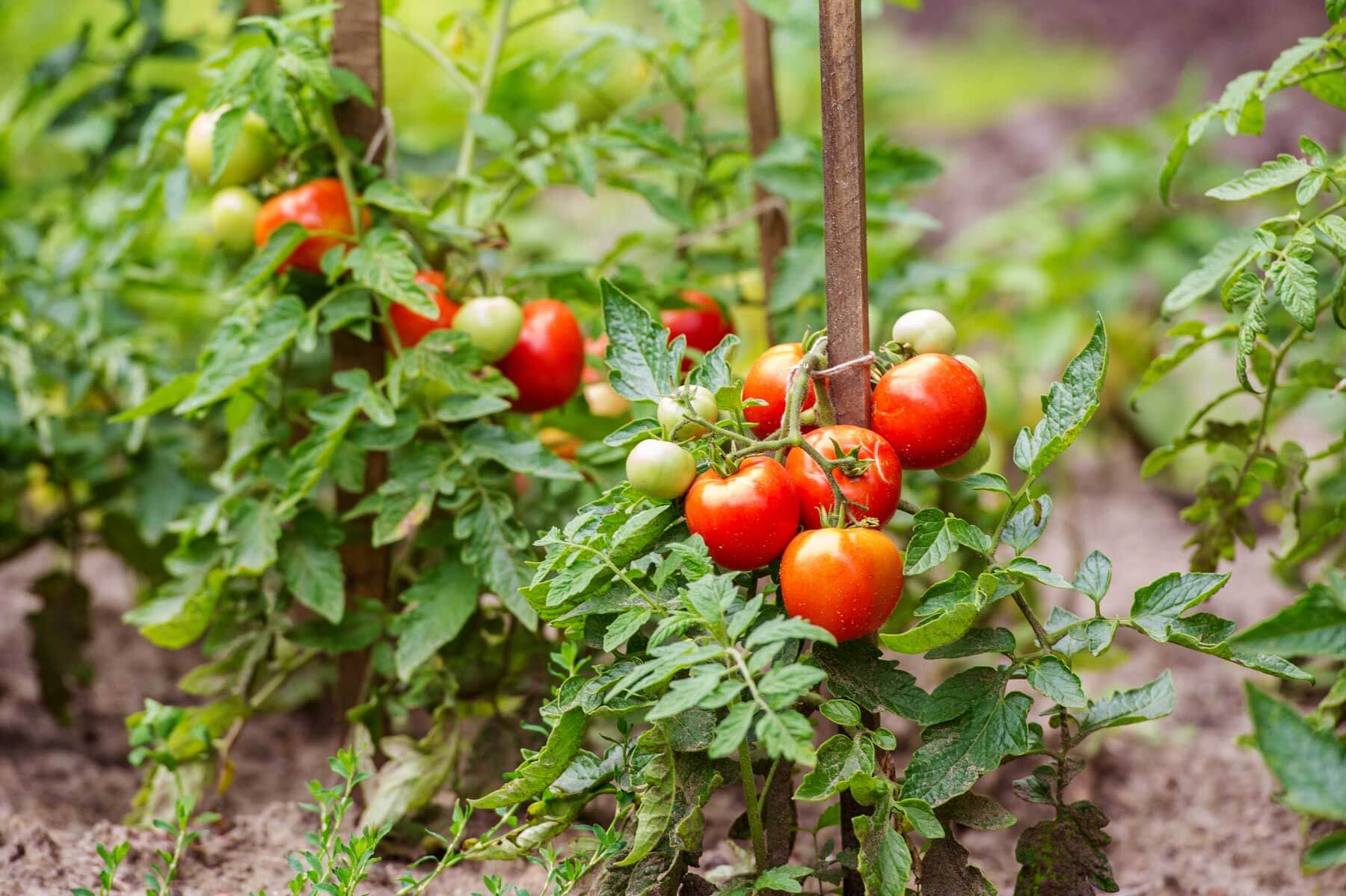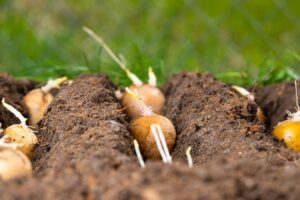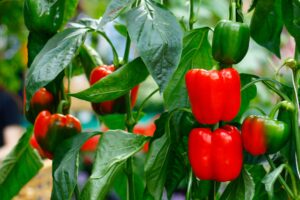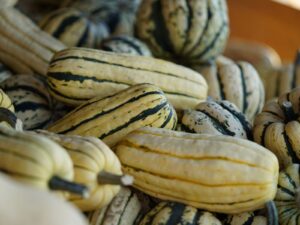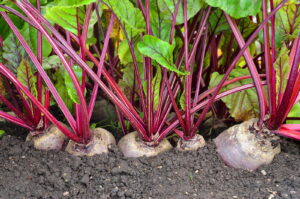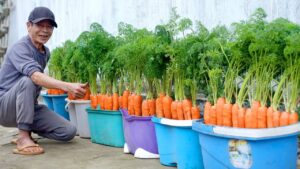How to Plant Tomatoes: A Complete Guide for Home Gardeners
Growing your own tomatoes is one of the most rewarding experiences for any home gardener. Nothing compares to the flavor of a freshly picked, sun-ripened tomato from your own garden. Whether you have a spacious backyard, a community garden plot, or just a sunny balcony, you can successfully grow delicious tomatoes with the right knowledge and techniques.
In this comprehensive guide, you’ll learn everything you need to know about planting tomatoes in various settings across the United States. From selecting the right varieties for your region to harvesting and troubleshooting common problems, this article covers all aspects of tomato cultivation for both beginners and experienced gardeners.
Why Grow Your Own Tomatoes?
Before diving into the how-to, let’s consider why growing your own tomatoes is worth the effort:
- Superior taste and nutrition: Home-grown tomatoes contain more nutrients and flavor compounds than store-bought varieties.
- Cost savings: A single tomato plant can produce 20-30 pounds of fruit throughout the season.
- Variety: You can grow unique heirloom varieties not available in stores.
- Environmental benefits: Growing your own food reduces carbon footprint from transportation and packaging.
- Educational value: Great activity for teaching children about where food comes from.
According to the USDA National Agricultural Statistics Service, tomatoes remain one of the most popular home garden crops in the United States, with over 25 million households growing them annually.
Choosing the Right Tomato Varieties
The US market offers hundreds of tomato varieties, each with unique characteristics. Your selection should consider your growing zone, available space, and culinary preferences.
Types of Tomatoes
By Growth Habit:
- Determinate (Bush): Grow to a certain height, produce all their fruit at once, then die back. Ideal for containers and small spaces.
- Indeterminate (Vining): Continue growing and producing fruit until killed by frost. Require staking or caging and more space.
- Semi-determinate: A middle ground between the two types.
By Fruit Size and Use:
- Cherry/Grape: Small fruits, perfect for salads and snacking (e.g., ‘Sun Gold’, ‘Sweet 100’)
- Roma/Paste: Egg-shaped, meaty tomatoes ideal for sauces and canning (e.g., ‘San Marzano’, ‘Roma VF’)
- Slicing: Large, round tomatoes perfect for sandwiches and general use (e.g., ‘Better Boy’, ‘Brandywine’)
- Beefsteak: Extra-large fruits with excellent flavor (e.g., ‘Mortgage Lifter’, ‘Cherokee Purple’)
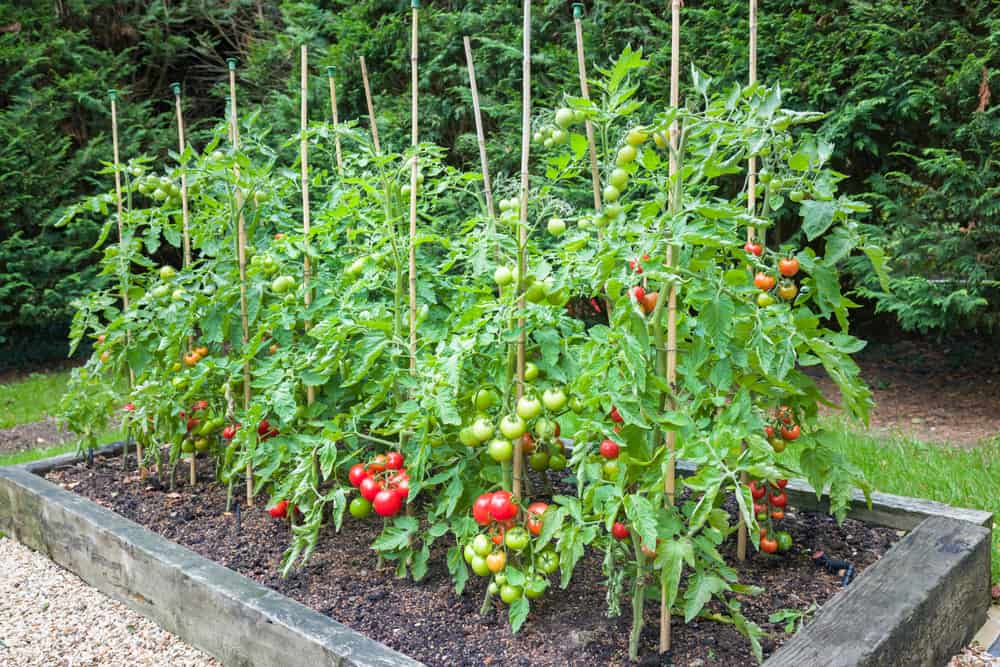
Popular Varieties by US Region
| Region | Recommended Varieties | Days to Maturity | Disease Resistance | Special Notes |
|---|---|---|---|---|
| Northeast | ‘New Yorker’, ‘Mountain Fresh’, ‘Jet Star’ | 60-75 days | Good late blight resistance | Cold-tolerant varieties |
| Southeast | ‘Arkansas Traveler’, ‘Celebrity’, ‘Heat Wave II’ | 70-80 days | High humidity tolerance | Heat-tolerant, crack-resistant |
| Midwest | ‘Early Girl’, ‘Better Boy’, ‘Wisconsin 55’ | 50-75 days | Good disease package | Reliable performers |
| Southwest | ‘Phoenix’, ‘Heatmaster’, ‘Sunmaster’ | 65-75 days | Heat and drought tolerant | Need afternoon shade |
| Pacific Northwest | ‘Oregon Spring’, ‘Stupice’, ‘Siletz’ | 55-70 days | Early producers | Cold-soil tolerant |
| Alaska/Cold Areas | ‘Siberian’, ‘Sub-Arctic Plenty’, ‘Northern Delight’ | 45-60 days | Cold-tolerant | Ultra-early varieties |
When to Plant Tomatoes
Timing is crucial for successful tomato growing. According to the National Gardening Association, tomatoes are warm-season crops that should be planted after all danger of frost has passed and soil temperatures reach at least 60°F (16°C).
General Timeline by USDA Zone
- Zones 3-4: Start seeds indoors 8-10 weeks before last frost; transplant outdoors late May to early June
- Zones 5-6: Start seeds indoors 6-8 weeks before last frost; transplant outdoors mid-May
- Zones 7-8: Start seeds indoors 5-7 weeks before last frost; transplant outdoors April to early May
- Zones 9-10: Fall and winter growing season; plant September through February
For specific frost dates in your area, consult the USDA Plant Hardiness Zone Map.
How to Start Tomatoes from Seeds
Starting your own tomato seedlings gives you access to more varieties and ensures plants are raised in optimal conditions.
Materials Needed:
- Quality seed starting mix
- Containers with drainage (cell trays, small pots, recycled containers)
- Seeds of chosen varieties
- Bright light source (sunny window or grow lights)
- Heat mat (optional but helpful)
- Water and plant labels
Step-by-Step Process:
- Fill containers with moistened seed-starting mix to about 1/4 inch from the top.
- Plant seeds 1/4 inch deep, placing 2-3 seeds per cell/container.
- Cover lightly with more mix and gently water.
- Create humidity by covering with plastic dome or plastic wrap.
- Provide warmth (70-75°F is ideal) for germination – a heat mat helps.
- Remove cover once seeds sprout (usually 5-10 days).
- Provide bright light – 14-16 hours daily, keeping seedlings 2-3 inches from grow lights.
- Thin seedlings to one per cell when they develop true leaves.
- Feed lightly with half-strength fertilizer after second set of true leaves appears.
- Transplant to larger containers when seedlings reach 3-4 inches tall.
Hardening Off Seedlings
Before planting outdoors, seedlings need to be gradually acclimated to outdoor conditions through a process called “hardening off.”
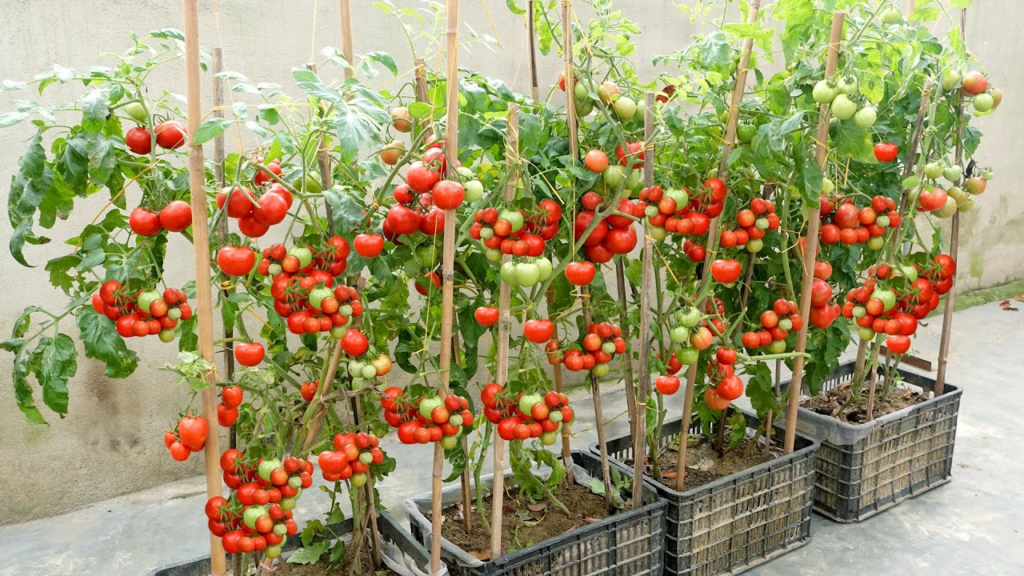
Hardening Off Schedule:
- Day 1-2: Place seedlings in a sheltered, shaded outdoor location for 2-3 hours.
- Day 3-4: Increase outdoor time to 3-4 hours with some filtered sunlight.
- Day 5-6: Extend time to 4-6 hours with more direct sunlight.
- Day 7-8: Leave plants out for 6-8 hours with nearly full sun exposure.
- Day 9-10: Leave plants outside all day and bring in at night.
- Day 11-14: Leave plants outside day and night unless frost is predicted.
Planting Tomatoes in Home Gardens
The key to successful tomato growing lies in proper planting techniques. Unlike most garden plants, tomatoes benefit from deep planting.
Materials Needed:
- Tomato seedlings or transplants
- Compost or aged manure
- Balanced organic fertilizer
- Mulch (straw, shredded leaves, or newspaper)
- Tomato cages, stakes, or trellises
- Garden tools (shovel, trowel, pruners)
Planting Steps:
- Choose location: Select a spot receiving at least 6-8 hours of direct sunlight daily.
- Prepare soil: Work in 2-3 inches of compost; perform a soil test if unsure about pH (aim for 6.0-6.8).
- Dig proper holes: Space holes 24-36 inches apart in rows 3-4 feet apart.
- Add amendments: Mix a handful of organic fertilizer into the bottom of each hole.
- Remove lower leaves: Strip off leaves from the bottom 2/3 of the stem.
- Plant deeply: Place plant in hole so that only top 1/3 of plant remains above soil level.
- Backfill: Gently firm soil around plant without compacting.
- Water thoroughly: Provide deep watering right after planting.
- Mulch: Apply 2-3 inches of mulch around plants, keeping it away from stems.
- Install supports: Place cages or stakes at planting time to avoid root damage later.
Container Tomato Growing
Don’t have a garden? No problem! Tomatoes thrive in containers on patios, balconies, or sunny doorsteps.
Container Requirements:
- Size: Minimum 5 gallons (larger is better) with drainage holes
- Soil: High-quality potting mix specifically for containers
- Varieties: Choose determinate or dwarf varieties for smaller containers
Container Planting Process:
- Prepare container: Ensure adequate drainage; add layer of gravel at bottom if needed.
- Fill container: Add potting mix to within 2 inches of rim.
- Add fertilizer: Mix in slow-release fertilizer according to package directions.
- Plant tomato: Follow same deep planting method as garden tomatoes.
- Support plant: Add cage, stake, or other support at planting time.
- Water thoroughly: Until water runs from drainage holes.
- Place in sun: Position container where it will receive at least 6 hours of direct sunlight.
- Monitor closely: Container plants dry out faster than garden plants.
Planting Tomatoes in Community Garden Plots
Community garden plots offer excellent opportunities for tomato growing but come with unique considerations.
Tips for Community Garden Success:
- Know the rules: Understand height restrictions, allowed structures, and watering policies.
- Choose wisely: Select disease-resistant varieties as diseases spread easily in community settings.
- Plan for absences: Consider self-watering systems or buddy arrangements for vacation periods.
- Label clearly: Mark your plants and plot boundaries to prevent confusion.
- Control sprawl: Use vertical growing systems to maximize space and minimize encroachment.
- Practice good sanitation: Remove diseased plant material promptly to prevent spread.
Care and Maintenance
Proper care after planting ensures healthy plants and bountiful harvests.
Watering Guidelines:
- Provide 1-2 inches of water weekly (including rainfall)
- Water deeply and infrequently rather than frequent light watering
- Water at soil level to keep foliage dry
- Increase watering during fruit development and hot periods
Fertilizing Schedule:
- Apply balanced organic fertilizer when first fruits are marble-sized
- Side-dress with compost monthly throughout growing season
- Avoid high-nitrogen fertilizers which promote foliage at expense of fruit
- Consider calcium supplementation if blossom end rot appears
Pruning and Training:
- Remove suckers (shoots growing from leaf axils) on indeterminate varieties
- Maintain 1-4 main stems depending on support system
- Remove lower leaves as plant grows to improve air circulation
- Pinch off growing tips in late summer to direct energy to ripening existing fruit
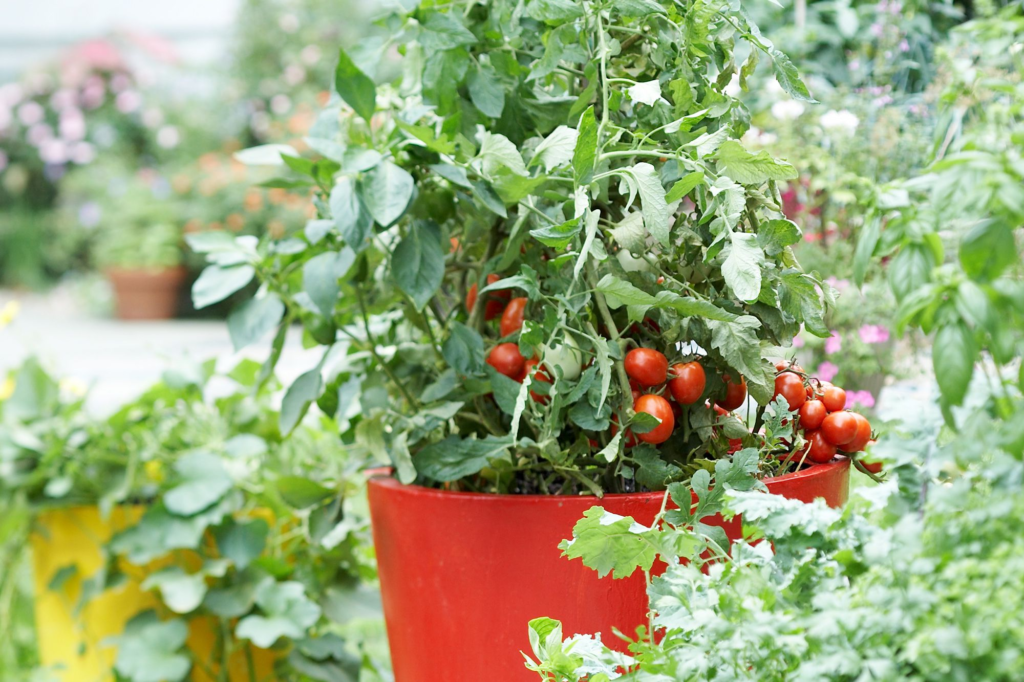
Common Tomato Problems and Solutions
Even experienced gardeners encounter challenges with tomatoes. Early identification and intervention are key.
Disease Prevention:
- Rotate crops (don’t plant tomatoes in same spot for 3-4 years)
- Use disease-resistant varieties
- Improve air circulation with proper spacing and pruning
- Apply organic fungicides preventatively in humid regions
Pest Management:
- Inspect plants regularly for signs of hornworms, aphids, or stink bugs
- Encourage beneficial insects by planting flowers nearby
- Use floating row covers for early protection
- Hand-pick larger pests like tomato hornworms
Environmental Issues:
- Provide afternoon shade in hottest regions
- Use mulch to regulate soil temperature and moisture
- Install wind breaks if needed
- Consider row covers for unexpected cold snaps
Harvesting and Using Your Tomatoes
The reward for all your work comes at harvest time. For best flavor, allow tomatoes to ripen fully on the vine.
Harvesting Tips:
- Harvest in morning when temperatures are cool
- Pick fruits when they have full color but are still firm
- Twist gently or use scissors to remove without damaging plant
- Handle by cupping fruit rather than pulling on stem
Extending Your Harvest:
- At season’s end, harvest mature green tomatoes before frost
- Ripen indoors by wrapping in newspaper or placing in paper bag with banana
- Pull up entire plants before killing frost and hang upside down in garage or basement
Conclusion
Growing tomatoes is an accessible and rewarding gardening project for Americans in all regions. By following the guidelines in this article, you’ll be well on your way to harvesting delicious, nutritious tomatoes from your own garden, container, or community plot.
Remember that gardening is both science and art – don’t be afraid to experiment with different varieties and techniques to discover what works best in your unique growing environment. Each season brings new learning opportunities and the chance to improve your tomato-growing skills.
For additional information and resources specific to your region, contact your local Cooperative Extension Service or visit the USDA’s Gardening Resources page.
